A Scrum Board (also called Scrum Task Board) is a tool that helps Teams make Sprint Backlog items visible. The board can take many physical (i.e. whiteboard and stickers) and virtual forms (i.e. software tools) but it performs the same function regardless of how it looks. A Scrum Board is the focal point of any agile project and serves as a good place at which to hold the stand-up meeting. The board is updated and referred by the Team and shows all items during the Daily Scrum keeps the team focused on the tasks that remain and their priorities.

Best Scrum Software Every Project Needs
A powerful scrum software that supports scrum project management. It features scrum tools like user story map, product backlog management, sprint backlog management, task management, daily scrum meeting, sprint planning tool, sprint review tool, sprint retrospective tool, burndown, impediment, stakeholder and team management.
It is important that the Task Board be somewhere visible to as many team members as possible and always accessible to all; usually a large wall or window (be creative). Manager’s offices and conference rooms are not good locations as they are not always accessible. It is important that the every team member feel they share ownership of the Task Board; it is representative of the teamwork necessary to succeed and shows that each individual is responsible for that success (or even failure.)
Scrum does not prescribe the format of a Scrum Board. It is for the team to decide the most useful way of presenting the information it needs. It should be possible for all developers to view and manipulate the board together as a team. Typically, the board is divided into several progressive slots, such as To-do, In Progress, Done. Sticky notes represent Sprint Backlog Items can be moved across the board to represent their progress to done (see Definition of Done).
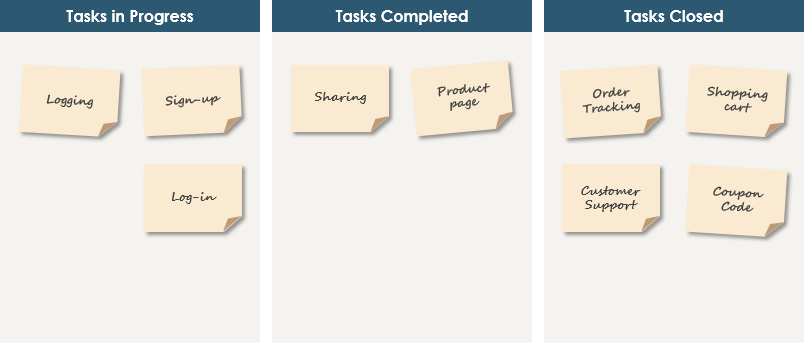
As shown in the Figure above, when Development Team members start a task they move the sticky note that represents it to the ‘In Progress’ column. When they complete a Sprint Backlog Item they move its sticky note to the ‘Completed’ column. Tasks verified are moved to ‘Closed’, and the developers who worked on it can now pick up a new one. Each Scrum Board lasts for the length of the Sprint. New Sprints require that the team create a new Scrum Board or that an existing Scrum Board be reset.
There are many digital alternatives to an analogue board, e.g. those created by tools like Visual Paradigm’s Scrum Process Canvas, which allow the collaborative management of the Scrum board with tracked changes, attached notes and document artifacts as an integral feature component. In fact, it allows you to manage your entire scrum process in one page.
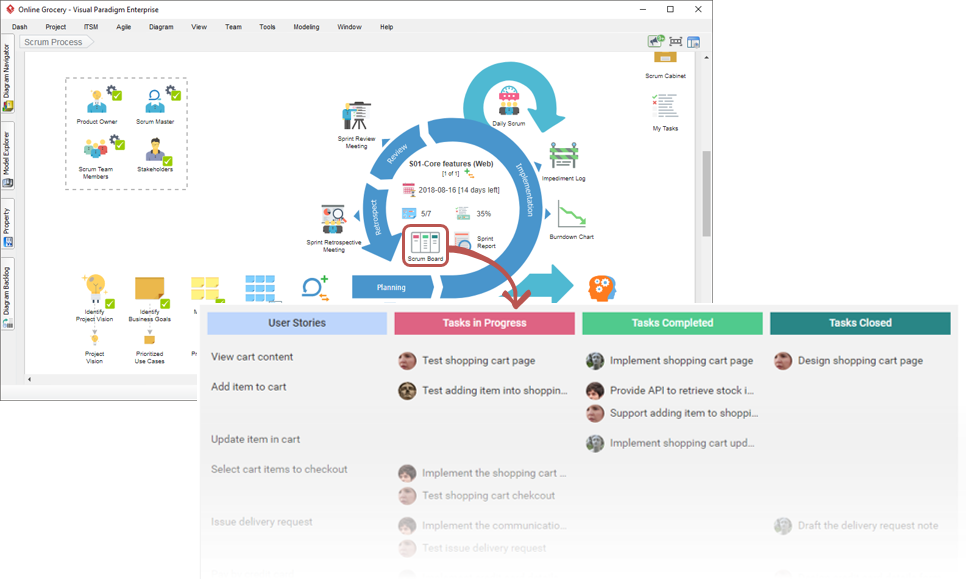
Such One-Page Scrum Process Canvas can be incredibly useful, especially for the Scrum Master and Product Owner during sprint planning, backlog refinement, tracking velocity over time. Sometimes, in the case of teams which are located on multiple remote development sites, even essential for the following reasons:
User story mapping
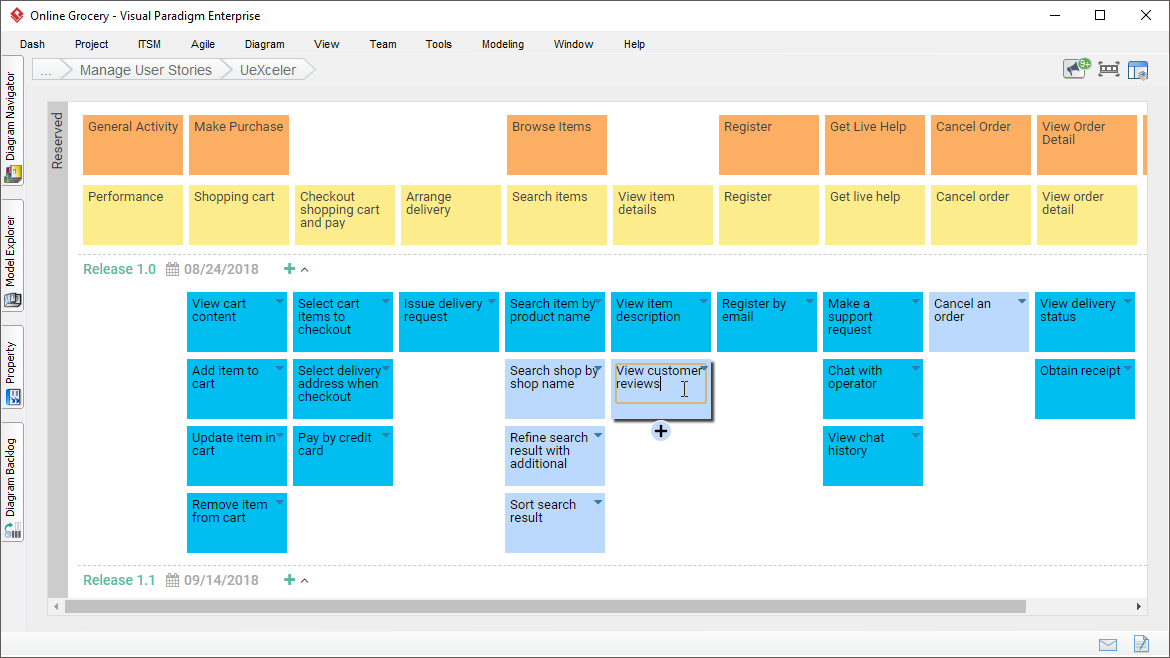
Managing user story tasks
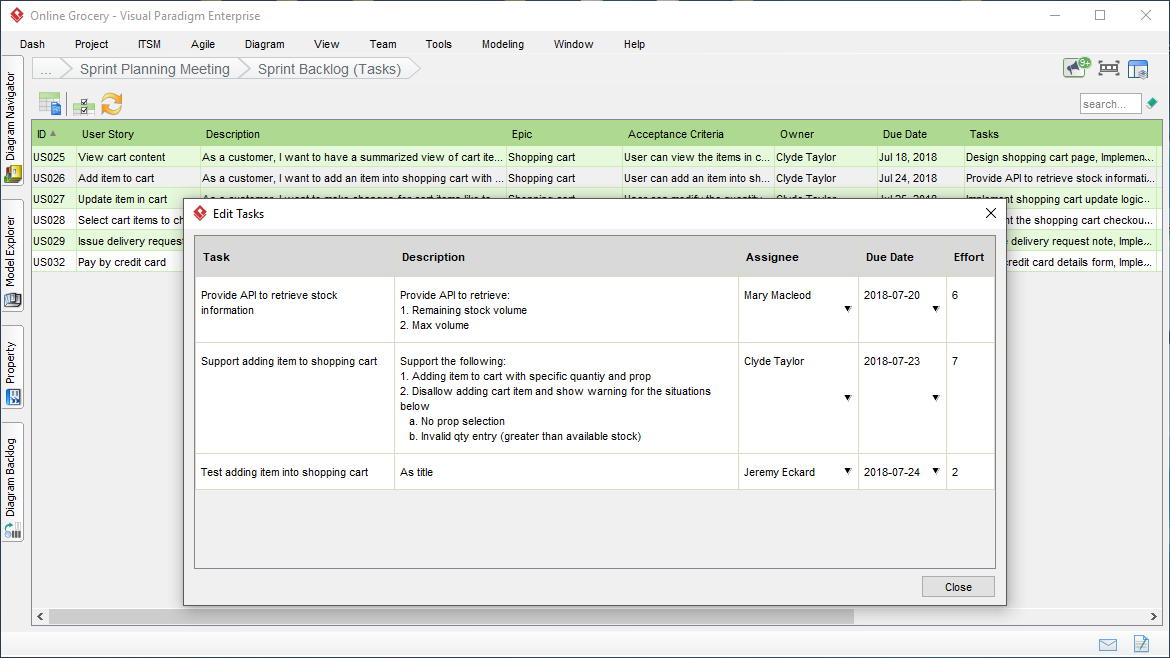
Recording daily scrum
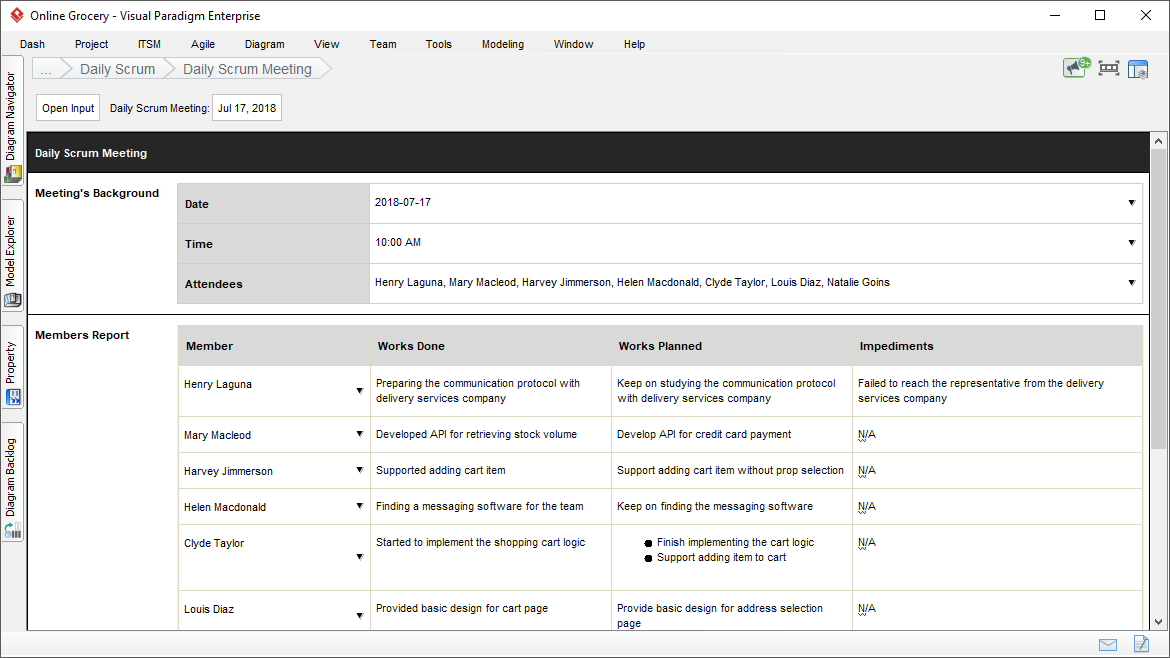
| About Visual Paradigm |
 Visual Paradigm help organizations stay competitive and responsive to change faster and better in today’s fast changing environment. Our award-winning products are trusted by over 320,000 users in companies ranging from small business, consultants, to blue chip organizations, universities and government units across the globe. It enables organizations to improve business and IT agility and foster innovation through popular open standards and process frameworks.Visual Paradigm, a killer Agile feature in 2018, introduced Scrum Process Canvas for automating the way a Scrum team to create, manage and deploy software application that empowers the team to continuously improve their performance at unprecedented speed and scale. Visual Paradigm help organizations stay competitive and responsive to change faster and better in today’s fast changing environment. Our award-winning products are trusted by over 320,000 users in companies ranging from small business, consultants, to blue chip organizations, universities and government units across the globe. It enables organizations to improve business and IT agility and foster innovation through popular open standards and process frameworks.Visual Paradigm, a killer Agile feature in 2018, introduced Scrum Process Canvas for automating the way a Scrum team to create, manage and deploy software application that empowers the team to continuously improve their performance at unprecedented speed and scale.
Manage the Entire Scrum Process in One Page
|